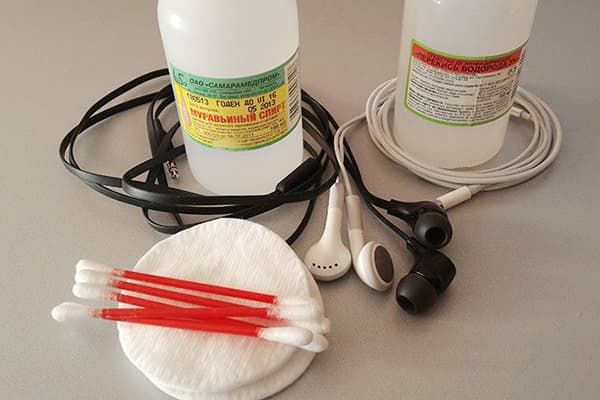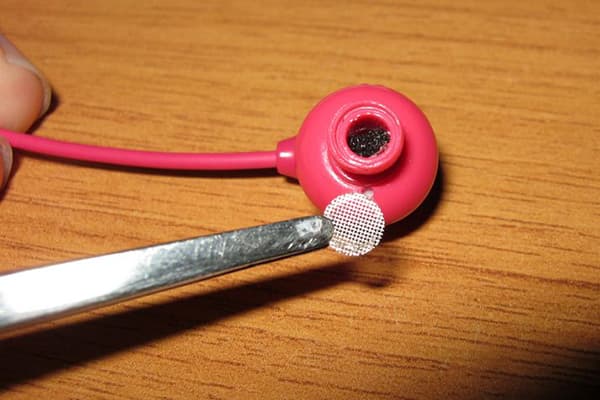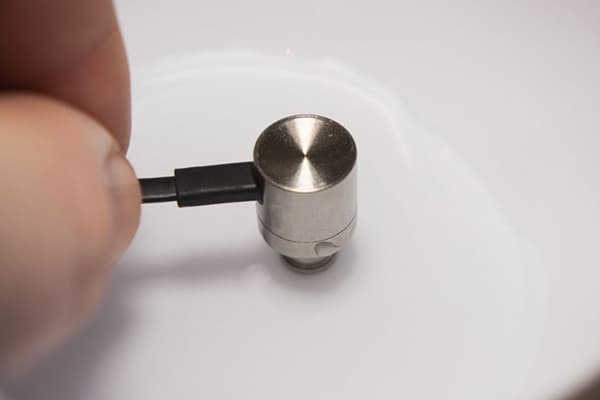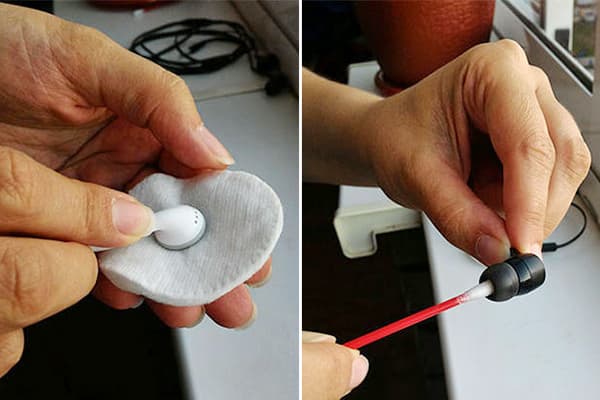Is it possible to clean headphones with hydrogen peroxide - all the pros and cons
If the sound quality in the earbuds has deteriorated sharply, regulars of computer forums recommend cleaning the headphones with hydrogen peroxide. On the one hand, this method has many enthusiastic reviews from those who dared to use it, but on the other hand, it is alarming, because contact of electronics with liquid is extremely undesirable.

Is it possible or not?
The short answer is yes. Since hydrogen peroxide actively decomposes in the open air and at a sufficiently high temperature (such as room temperature), releasing huge amounts of oxygen, it easily corrodes most contaminants that are of a biological nature. These include blood, earwax and fat that has migrated onto the headphones from the fingers and hair.
By the way, it is the presence of earwax on the mesh of in-ear headphones that in most cases prevents them from producing sound of the frequency and pitch that the owner expects.
However, if you study the issue in detail, circumstances appear that make cleaning headphones with peroxide undesirable:
- Firstly, this substance is an active oxidizing agent. With prolonged exposure to metal parts, it accelerates the onset of corrosion and, accordingly, reduces the service life of the product.
- Secondly, hydrogen peroxide is a liquid comparable in some of its properties to water, so it can wet paper membranes.And since it is the membranes that are responsible for the sound quality, their deformation when drying and possible ruptures can easily turn an expensive accessory from an iPhone, Samsung or other gadget into useless trash.
Thus, it turns out that you can take a risk and subject the headphones to such cleaning if they have already served enough, the warranty or replacement period has expired, and their loss will not be a blow to the budget and will not greatly upset the owner.
How to help headphones survive?
To minimize the risks when cleaning the headset, you need to be able to disassemble and reassemble this device. The mesh and plastic parts of the body can be soaked in peroxide with virtually no consequences (with the exception of metal parts coated with plastic or paint on top: H2O2 easily penetrates such coatings, causing them to peel). But dipping the “filling” of the headphones - the dynamic transducer (even if its membranes are not made of paper), the connector and metal wires - into a container with peroxide means hopelessly ruining the headset.
Non-separable models will require more care and ingenuity to clean safely.
Some craftsmen construct entire systems from threads, matches, bottle caps and other things that come to hand that can hold the headphones in the desired position. However, one awkward movement of a cat passing by the container where the headphones get their second life - and all efforts will go down the drain. The safest thing is to hold the headset in your hands and personally control the degree of immersion in the solution during the entire cleaning time.
Step-by-step instruction
There are two ways to clean your headphones with hydrogen peroxide.In addition to what has already been mentioned - soaking some parts by immersing them in liquid, there is also a less risky one. It is recommended for working with original Apple accessories: the high cost does not allow everyone to purchase new EarPods to replace damaged ones.
It is important to note that here and below the words “hydrogen peroxide” mean exclusively a 3% solution prepared and purified industrially, which is sold in pharmacies.
Method 1 (immersion)
To implement your plan you will need:
- a bowl or glass made of plastic or glass (metal utensils are not suitable);
- sufficient amount of peroxide;
- tools for disassembling headphones;
- paper or cloth napkins.
If you succeed in disassembling the headphones, the mesh and other parts stained with earwax or grease are lowered into a container with a solution. Cleaning takes approximately 30 minutes, after which the parts need to be removed and dried with napkins. When there is no moisture left, you can return the headset to its original appearance.
If the headphones cannot be disassembled, proceed as follows:
- A very thin layer of peroxide, literally 1 mm high, is poured onto the bottom of the bowl and placed on a flat, hard surface (table, chair, window sill).
- The headphones are turned over with the mesh side down and lowered into the solution, constantly holding it. You need to make sure that liquid does not accidentally get deep into the earphone.
- After the designated time, the accessory is removed without turning the mesh upside down. Wipe wet areas with napkins and place them on a dry, hygroscopic surface (for example, a terry towel) to remove any remaining moisture. You can lightly bury the headset in the rice without changing its position.
Method 2 (wiping)
To clean at its best, you need to prepare:
- cotton buds;
- peroxide;
- paper or fabric napkins;
- thin toothpicks.
Then everything is simple - uncork a bottle of hydrogen peroxide and dip a cotton swab into it. When removing, gently squeeze it against the edge of the neck so that it remains moist, but not wet. Use this stick to wipe the mesh on one of the headphones, trying to do this operation so that the solution does not leak inside, and then place it with the mesh down on a napkin. Do the same with the second earphone. After half an hour, a new stick moistened with peroxide removes the remaining sodden dirt and earwax, then wipe the headphones with a dry cloth and leave to dry. If necessary, clean the cells with a toothpick.
So, it is both possible and necessary to clean headphones with hydrogen peroxide if the likely benefits from such an event outweigh the possible losses in the event of an unsuccessful outcome. Moreover, this work does not require either expensive materials or specific skills.




It was not possible to disassemble the headphones; I cleaned them according to the instructions in the article. Everything needs to be done very carefully.But it's worth it, the headphones are clean and the sound is excellent. And the costs are minimal.